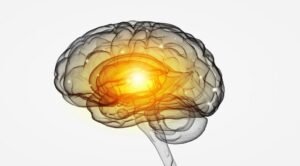Separation Anxiety Disorder Symptoms and Diagnosis 309.21 (F 93.0):
Separation anxiety disorder was first included as a diagnosable condition in the DSM-3 in 1980. In the DSM-5 (Diagnostic and Statistical Manual of Mental Disorders Fifth Edition) which was published in 2013, it was then moved from the Disorders Usually First Diagnosed in Infancy, Childhood, or Adolescence chapter of the previous DSM-4-TR to the Anxiety Disorders chapter. Additionally, the age of onset requirement was no longer an expectation allowing the diagnosis of separation anxiety disorder to also be allowed for adults.
Separation Anxiety Disorder Symptoms:
The most important features of separation anxiety disorder include developmentally inappropriate nervousness and fear of separation from a primary caregiver. The physical symptoms include stomachaches, headaches and cardiovascular symptoms in adolescents and adults which are experienced in addition to the fear and anxiety. Usually the fear or worry experienced is associated with a concern for possible harm to figures of attachment. In most cases this leads to a desire to not be away from these attachment figures or of being alone.
For children to experience separation anxiety disorder, symptoms must stand out and be experienced for no less than a minimum of one month. Adults can experience separation anxiety disorder symptoms for their entire lifetime but must be significant for a period of at least six months or longer. Lifetime prevalence rates for separation anxiety disorder are highest among children with the rate of about 4%. Adolescents seem to experience separation anxiety disorder at a rate of approximately 1.6%, with a rate of 0.9% to 1.9% for adults. However, the National Comorbidity Survey Replication found an overall lifetime prevalence rate of separation anxiety disorder in adulthood of approximately 6.6%. Girls tend to experience separation anxiety disorder more often than boys with both experiencing impairment in school, work and social settings.
Although the symptoms of separation anxiety disorder are greater among children, the symptoms for both children and adults are similar in that the individual develops an inordinate fear of separation from loved ones or a fear of harm to them. However, symptoms among children are more overt such as crying and open displays of fear. Adults seem to display the symptoms in a more covert form such as wanting to stay close by, staying home from work or activities or may want to “check-in” often.
An additional concern when diagnosing separation anxiety disorder is that there are some cultural considerations in that individuals from more collectivist cultures may easily be pathologized because the children and adults may be less often separated. These cultures may also result in fewer people seeking treatment for separation anxiety disorder because the closeness may be relatively more of a social expectation.
In addition to the cultural considerations, mental health clinicians need to distinguish between developmentally inappropriate reactions to separation and abnormal reactions. Other mental health conditions such as panic disorder, generalized anxiety disorder, conduct disorder, agoraphobia, PTSD, bereavement, depressive and bipolar disorder, personality disorders, and oppositional defiant disorder are some of the mental health conditions which need to be distinguished from and differentially diagnosed from separation anxiety disorder. Once again, with separation anxiety disorder, the concern is an inordinate fear and worry of being separated from attachment figures.
Separation Anxiety Disorder Treatment:
Treatment for separation anxiety disorder is like treatment for most other anxiety disorders. Psychotherapy including cognitive behavioral therapy, family counseling and medications for anxiety are most often used to remediate the symptoms in children and adults.
Separation Anxiety Disorder Coding:
The coding for separation anxiety disorder is 309.21 (F93.0). There are no specifiers for this anxiety disorder.
Specific separation anxiety disorder symptoms and diagnostic information follow below.
Separation Anxiety Disorder Diagnostic Criteria: 309.21 (F93.0)
A. Developmentally inappropriate and excessive fear or anxiety concerning separation from those to whom the individual is attached as evidenced by at least three of the following:



